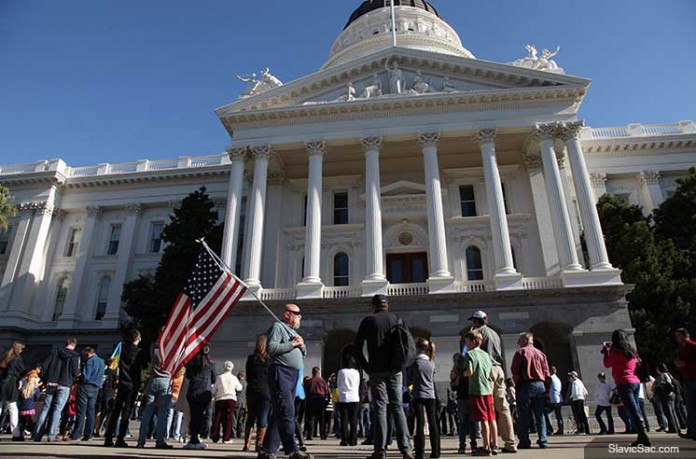A clearer picture is emerging of the ethnic groups from the former Soviet Union in California.
According to a 2021 survey by the U.S. Census Bureau, Russians are the most represented in California, followed by Armenians and Ukrainians.
The Bureau also tracks the languages spoken by residents, focusing on three groups of people who “speak,” “speak very well,” and “don’t speak very well.” As in previous years, the leading languages of the former Soviet Union in California are Armenian, Russian and Ukrainian.
Speak Speak very well Don’t speak very well Armenian 195,413 109,749 85,664
Russian 170,508 101,326 69,182
Ukrainian 41,606 25,762 15,844
The Census Bureau also provides data on individuals who identify with mixed ethnic categories (for example, families where the mother is Jewish and the father is Georgian). Specifically, the Census records 892 individuals in California who identify as mixed Tatar.
The three largest mixed ethnic groups in California, along with immigrants from post-Soviet countries, are Russians, Armenians, and Ukrainians.
Every decade, the Bureau conducts a nationwide survey, but additional surveys are carried out at the county level in the interim years, providing more specific statistical data.
This table lists individuals from the post-Soviet space who identify with specific ethnic groups without mixing with others.
Nationality Number of people Armenians 249,132 Azerbaijanis 1,594 Belarusians 8,032 Estonians 1,858 Georgians 1,965 Kazakhs 2,347 Kirghiz 740 Latvians 4,404
Luthuanians 13,935
Moldovans 4,738 Russians 165,660
Tajiks 236
Tatars 455 Turkmen 147 Ukrainians 62,431 Uzbeks 1,585 TOTAL: 519,257
This second table lists how many people identify with more than one ethnic category (for instance, families where the mother is Russian and the father is Georgian). It is important to note that these statistics include individuals who belong to ethnic groups from the post-Soviet region, but do not necessarily mean that they emigrated to the U.S. from the former Soviet Union. Before moving to the United States, some may have lived in other countries.
It should be noted that the statistics do not reflect data for those ethnic groups that immigrated, for example, from Russia, or those born in the U.S. to Russian-speaking families who ethnically belong to Bashkirs, Chukchi, or other people who may identify themselves as Russians.
Nationality Number of people Armenians 249,195 Azerbaijanis 1,980 Belarusians 10,755
Estonians 4,273 Georgians 2,548 Kazakhs 3,189 Kirghiz 975
Latvians 12,144
Luthuanians 56,616
Moldovans 5,380 Russians 364,909
Tajiks 714 Tatars 892 Turkmen 340 Ukrainians 106,201 Uzbeks 3,084 TOTAL: 822,303
According to recent research by Slavic Sacramento, which is based on Census Bureau figures, there are approximately 5 million individuals from post-Soviet countries residing across the United States. However, this number may not be entirely accurate, as the census may not have captured all residents from the former Soviet republics.
In recent years, due to Russia’s unprovoked military aggression against Ukraine, several hundred thousand Ukrainians and Russians have arrived to the United States. This influx continues, as people seek safety and new opportunities in America. The growing presence of these communities highlights the ongoing impact of geopolitical events on migration patterns and underscores the need for support and resources for those who are resettling in the U.S.
Виталий Атаев Трошин, California Local News Fellowship
Елена Кузнецова, Руслан Гуржий, SlavicSac.com




